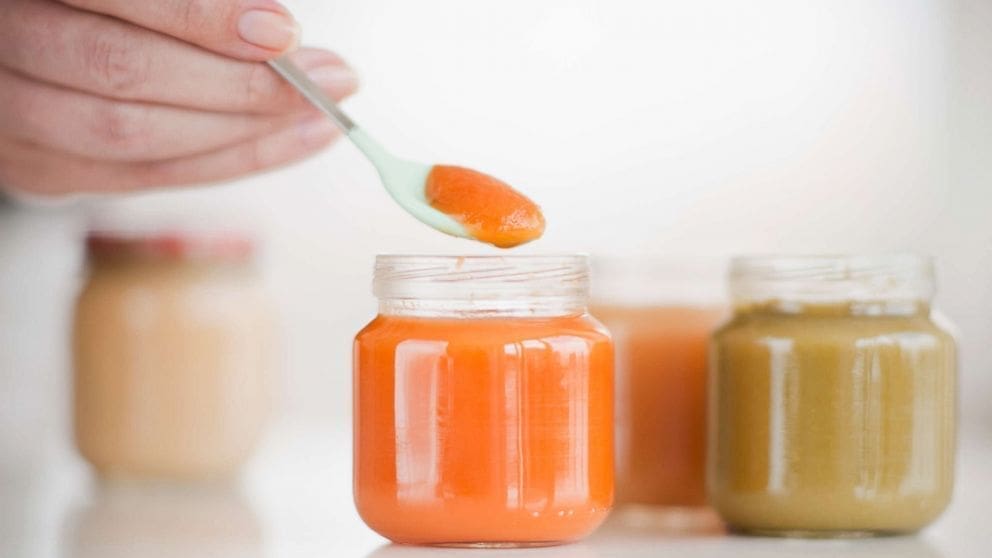U.S – The U.S. Food and Drug Administration has produced draft recommendations for the industry on “action levels” for lead in processed foods that are meant for newborns and children under two years old, In order to minimize potential health impacts on this vulnerable population from dietary exposure to lead.
The FDA asserts that the suggested “action levels” would ensure the availability of wholesome meals while significantly reducing lead exposure from food.
The recommendations are a part of Closer to Zero, which outlines the FDA’s science-based strategy for decreasing exposure to lead, arsenic, cadmium, and mercury in foods consumed by infants and young children to the lowest levels achievable.
“As part of our approach, as laid out in 2021 when the FDA released Closer to Zero, the agency is committed to assessing if action levels should be lowered even further, based on evolving science on health impacts and mitigation techniques, and input from industry on achievability,” the FDA said.
FDA Commissioner Dr. Robert M. Califf, MD, stated that the organization has been working to limit exposure to lead and other contaminants from food for more than 30 years.
Since the mid-1980s, the commissioner claims, lead exposure from foods has dramatically decreased as a result of the FDA’s efforts.
“For babies and young children who eat the foods covered in today’s draft guidance, the FDA estimates that these action levels could result in as much as a 24-27 percent reduction in exposure to lead from these foods,” Califf added.
Foods covered by the draft guidance, Action Levels for Lead in Food Intended for Babies and Young Children, are those processed foods, such as food packaged in jars, pouches, tubs, and boxes and intended for babies and young children less than two years old.
Action levels included in the draft guidance include 10 parts per billion (ppb) for fruits, vegetables (excluding single-ingredient root vegetables), mixtures (including grain and meat-based mixtures), and yogurts. custards/puddings and single-ingredient meats, 20 ppb for root vegetables (single ingredient), and 20 ppb for dry cereals.
The FDA believes that these action levels are attainable when steps are taken to reduce the amount of lead present, and it anticipates that the industry will work to continuously lower this contaminant.
Consumer Reports calls on FDA to strengthen proposed limits
Consumer Reports (CR), an American nonprofit consumer organization dedicated to independent product testing, lauded the FDA’s proposed limits as a positive first step but argued that tighter restrictions are required to safeguard this vulnerable demographic.
CR is calling on the FDA to strengthen the proposed limits as it finalizes the standard in the coming months.
“We’re encouraged that the FDA has proposed these new standards, but clearly more needs to be done to limit exposure to toxic lead and protect babies and young children.
“The FDA should set strict limits on so-called baby junk food – grain-based snacks such as puffs, rusks, and wafers – since those foods typically contain the highest levels of lead,” said Brian Ronholm, Director of Food Policy for Consumers Reports.
The organization, which has long been involved in the issues, said the FDA did not propose limits for grain-based snacks.
“It appears that the proposed standards were set based more on current industry feasibility to achieve the limits and not solely on levels that would best protect public health. The FDA should be encouraging the industry to work harder to reduce hazardous lead and other heavy metals in baby food given how vulnerable young children are to toxic exposure.
“We look forward to working with the FDA to build on this proposal and gradually lower and eventually eliminate toxic heavy metals in baby food,” said Ronholm.
Consumer Reports examined 50 widely available packaged foods for infants and toddlers in 2018, looking for lead and other heavy metals thought to be the most dangerous to human health.
The lead, cadmium, and/or inorganic arsenic levels in around two-thirds of the products—34—were alarming. 15 of them posed a risk to a child who consumed one serving or fewer per day.
Rice, sweet potatoes, and goods containing those ingredients were found to be particularly likely to have high amounts of heavy metals, according to CR.
Early exposure to heavy metals, such as lead, even in little doses, may increase the likelihood of a number of health issues including lower IQ and behavioral issues. It has also been linked to autism and attention deficit hyperactivity disorder.
A 2018 study in the journal Lancet Public Health suggests that even low levels of lead from food and other sources contribute to 400,000 deaths each year, more than half of them from cardiovascular disease.
Moving forward, the FDA will continue to gather data and collaborate with federal partners to establish the scientific basis for establishing Interim Reference Levels for arsenic, cadmium, and mercury.
For all the latest food safety news from Africa and the World, subscribe to our NEWSLETTER, follow us on Twitter and LinkedIn, like us on Facebook and subscribe to our YouTube channel.








